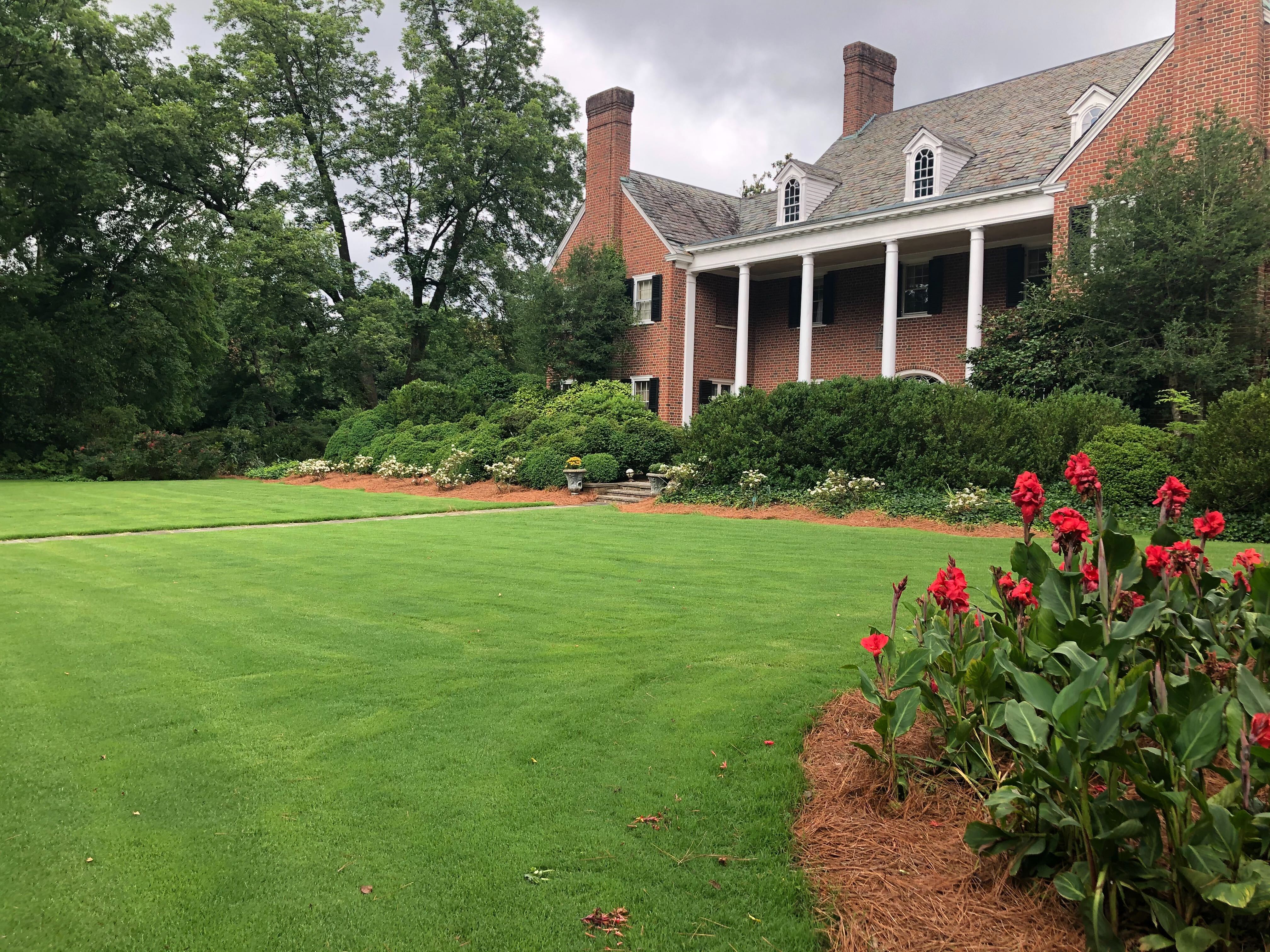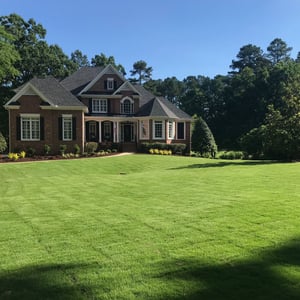Preparing the soil is a crucial step in laying new sod. Would you lay a carpet without underlayment? Same applies to improving your soil for your new sod. Soil³ improves the structure of your dirt and provides the nutrients your lawn needs to start out right.
The Zeon Zoysia lawn in the header was laid with Soil³ worked into the ground. Now that's a picture perfect lawn! Photo provided by Shannon Hathaway, turfgrass expert in Raleigh, North Carolina.

This TifTuf Bermudagrass lawn was installed at an historic home near Charlotte by Stephen Raiford, turfgrass expert in that area. Stephen doesn't install a lawn without using Soil³.
Steps for Laying New Sod with Soil³
- If renovating an existing lawn, destroy the current vegetation.
- Prepare the site by grading so that the soil slopes away from foundations and buildings, thus avoiding drainage problems.
- Using Soil³ humus compost: Soil³ should be mixed with the top layer of existing soil. Just raking the Soil³ into the existing top soil is usually sufficient.
- Smooth the soil, remove rocks, roots, clods, and vegetation.
- Water heavily to see if water puddles in any low spots, and if it does, add soil and/or regrade to eliminate low spots.
- Keep soil surface 1/2" below walks and drives. Tilled soil will settle some.
- Our experience shows that no pre-planting fertilizer is necessary when using Soil3.
- Apply and rake in dolomitic lime based on soil test results and based on the type of sod you have. Not all turfgrass needs lime (example: Centipede sod typically doesn't need lime).
Detailed sod installation info is on Super-Sod's website under How to Lay Sod. Or, watch the video below!
How Much Soil³ to Use
- 1 cubic yard of Soil3 will cover 1,000 square feet.
- Not sure how much you need for your lawn or garden project? Calculate it!
The Tall Fescue sod in the front was laid without Soil³ added to the ground. For their second round of sod (the verdant sod in the background), this person decided to add Soil³ compost. The quality difference is obvious: lush green with Soil3 and roughly brownish green without. Photo provided by Stephen Raiford, turfgrass expert at Super-Sod of Charlotte, North Carolina.
Ready for your new sod with Soil³?
We offer Soil³ in a Mini Cube (1 cubic foot) or 1 cubic yard in a BigYellowBag.
For your convenience, we will deliver the BigYellowBag to your location or visit your local Soil³ dealer to pick up Mini Cubes.

![Seeding a Tall Fescue Lawn with Soil3 [video]](https://blog.soil3.com/hs-fs/hubfs/fescueseed.jpg?width=300&name=fescueseed.jpg)


Did this help you out? Have any questions for clarity? Leave a comment below!